Affiliate disclosure: This post may contain affiliate links. Please see our Privacy Policy.
Canning water is a simple way to ensure you always have fresh water on hand for emergencies. While bottled water only keeps for about a year, canned water should stay fresh for decades!
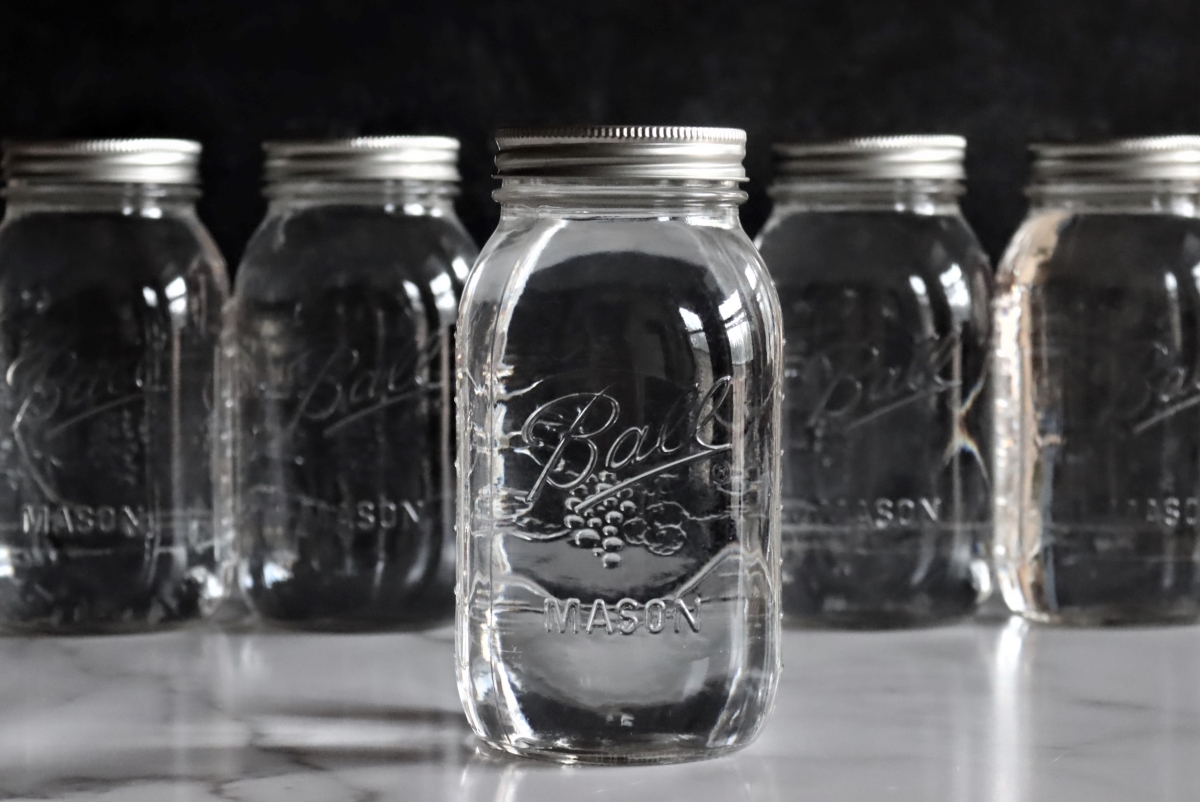
I know what you’re thinking…why on earth would you waste a mason jar on canning water?
It’s true that bottled water is cheap and plentiful, but you may not know that bottled water only lasts a year. After that, the bottle begins degrading and pollutes the water inside.
(A year’s not a “magic” number where it suddenly goes bad, it’s actually slowly degrading from day one.)
Water stored in glass, on the other hand, will keep for decades if properly sterilized first. Canning jars are the perfect way to store water for emergency use, as it’s easy to sterilize and seal the jars at home in a water bath canner.
Plus, you’ll cut down on waste from all those one time use plastic water bottles.
Is Canning Water Necessary?
Wait, why can’t you just store water in canning jars (without actually canning it)?
Believe it or not, water actually spoils if left to sit for a few months, even in glass jars. Things like moss and mold might proliferate, and you’ll notice an “off’ flavor in the water after a few months.
There’s a reason sailors on long sea voyages drank so much whisky and grogg. The water was actually spiked with alcohol to help prevent it from spoiling or going “off” during storage.
The same thing happens to stored water these days, unless it’s properly sterilized and completely sealed.
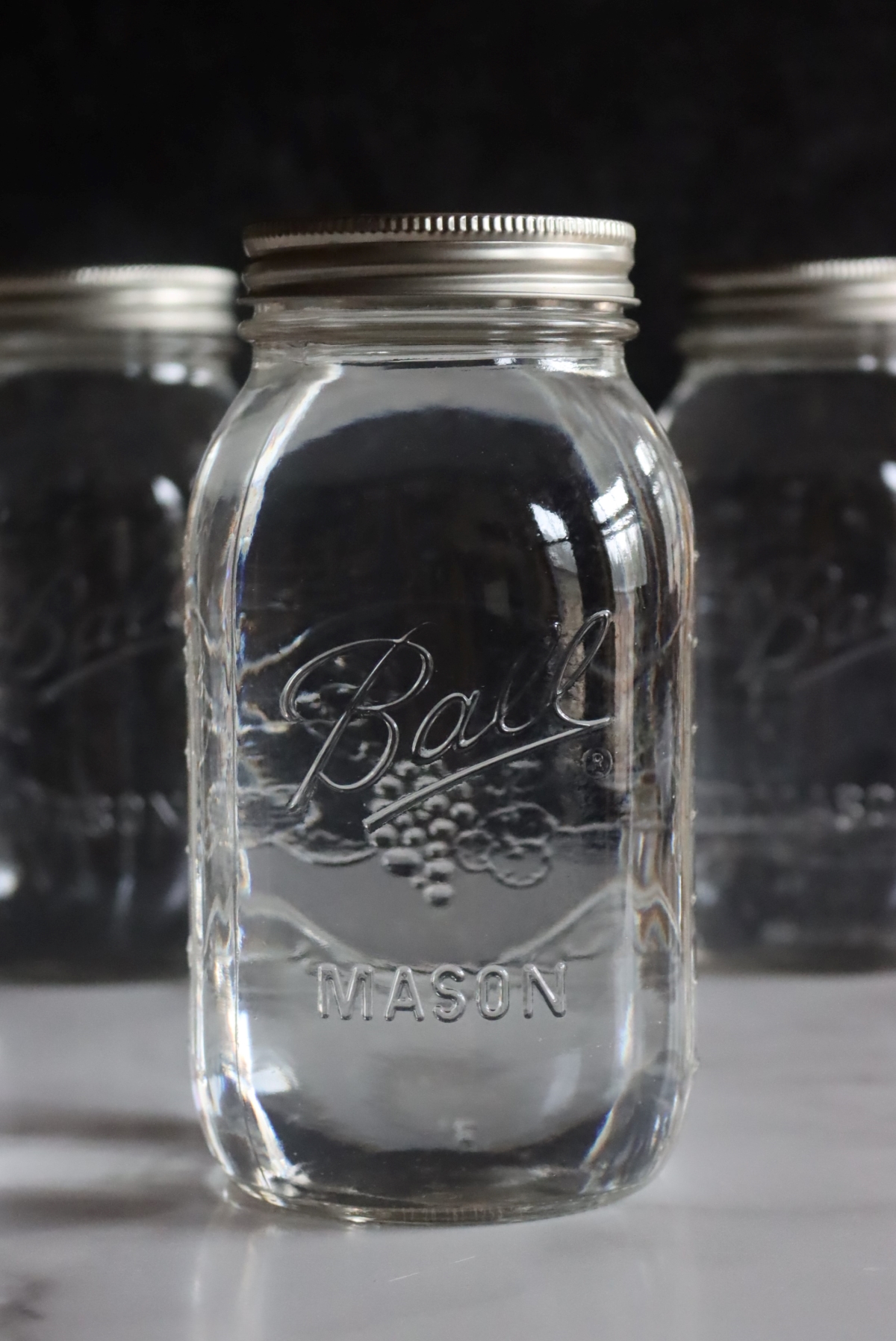
Can I Can Water?
Most canners know that high acid foods like jam, jellies, and pickles can be water bath canned, while low acid foods like meat must be pressure canned.
What about canning water?
Provided the water is clean and potable, it’s perfectly fine to water bath can plain water.
Keep in mind that you cannot add any nutrients or sugar attempting to make an electrolyte solution. It must be plain water, without anything added.
That said, I generally pressure can water instead because it’s actually faster start to finish. I don’t quite have space on my stove for a giant pot of water and a water bath canner, but my tall pressure canner fits beautifully next to a 5-gallon stockpot.
I’ll take you through both methods, and you can decide for yourself.
(Many home canners I know can water at home alongside their other canning batches. When a batch isn’t quite full, they’ll add in a jar of boiling water to fill out the batch. That way, instead of doing a dedicated batch they’ll slowly build up their supply of home-canned water. That’s a totally fine method, provided the canning times are at least what’s recommended below for both water bath canning and pressure canning.)
Preparing Jars for Canning Water
Canning water starts with preparing the jars, just like any canning project. Make sure they’re completely clean, washed with hot soapy water, or run through a cycle in the dishwasher.
While they should be completely clean, it’s not actually necessary to boil the jars to pre-sterilized them. According to the National Center for Food Preservation:
“In order to actually sterilize jars, they need to be submerged in (covered by) boiling water for 10 minutes. When the processing time for canning food is 10 minutes or more (at 0-1,000 feet elevation), the jars will be sterilized DURING processing in the canner. Therefore, when process times are 10 minutes or more at this altitude, pre-sterilization of jars is not needed. It doesn’t hurt your product to do it anyway, but it does require additional time and energy and is unnecessary.”
That said, it is a good idea to pre-warm the jars and set them on a towel on the counter for filling. Warm jars are less likely to suffer thermal shock as when filled with boiling water, and a towel under them helps insulate them from the cold counter below.
I’ll run mine through a hot cycle on the dishwasher and then leave them in there to stay warm until I’m ready to begin actually canning.
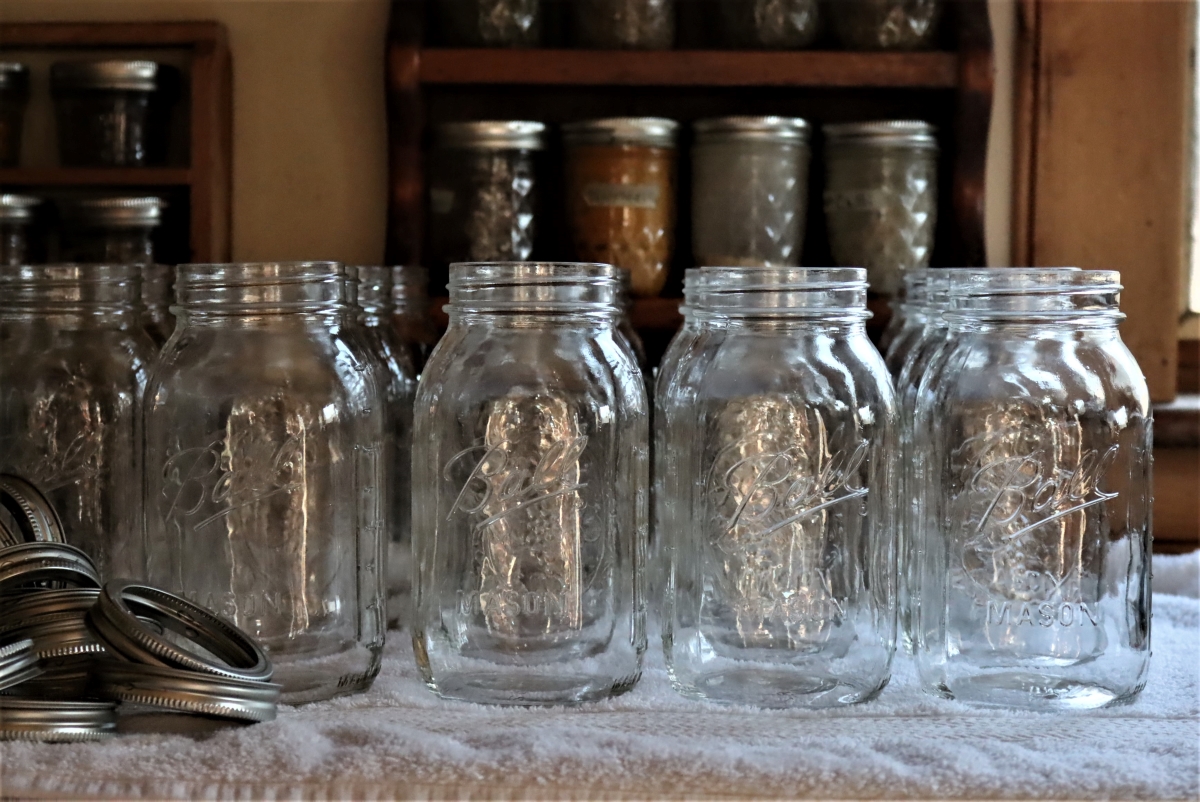
Water Bath Canning Water
You’d think something as simple as canning water would be easy to agree upon, but various state extension agencies have slightly different instructions. I read literally dozens of descriptions of the process to home can water, and each agency seems to have its own version.
Some say that canning in a boiling water bath canner for 10 minutes is totally sufficient, others insist on 20 minutes.
Some say to have the canner at itself at a simmer (around 180 degrees) when the jars go in. Others suggest starting with hot (but not simmering) water at around 140 F, and then bringing it up to a full rolling boil with the jars inside the canner.
When I finally put them side by side and tried to find a consensus…I was surprised to realize they’re all actually saying the same thing.
How is that possible?
Some agencies are writing for experienced canners, that understand that you need to adjust the canning time for elevation. Others are writing for novices, and just providing the hottest and longest process time out of an abundance of caution. (Process times that’d be completely overkilled at sea level, but just enough for over 6,000 feet.)
The starting temperature differs because generally when you’re canning, you use a canner at 140 degrees for a raw pack, and 180 degrees for a hot pack.
A raw pack is when you pack fruit/veggies/etc into a jar at room temperature, and then boiling water is poured over the top. That means the jars are cooler than if it’d been hot packed, where everything went in boiling.
The temperature of the canner is adjusted to prevent thermal shock, and more closely match the temperature inside the jar.
The trick is, when you’re canning water, are you “raw packing” or “hot packing”? There’s no produce in the jar to cool it, so I’d argue that it’s a “hot pack.” Clearly, the extensions can’t make up their mind on that one, and that’s why some recommend 140 degrees to help prevent thermal shock if the jars cool too much before they go into the canner.
Instructions for Canning Water in a Water Bath Canner
Bringing all the various instructions for canning water together, this process actually agrees with more than a dozen sources from various agricultural agencies. Rather than just giving you the longest possible times (as some do), I’m going to give you altitude adjustments.
That said, the quality of the water doesn’t really degrade if you “over can it” and process it for too long. If you want to error on the side of caution, that’s totally fine.
(If you’re not familiar with water bath canning, please read this beginner’s guide to water bath canning before getting started.)
Prepare a water bath canner by bringing it up to just barely simmering 180 degrees F.
In a separate pot, bring clean potable water to a full rolling boil. Boil the water for a full 5 minutes before proceeding.
Fill clean canning jars with boiling water, leaving 1/2 inch headspace.
Seal the jars to finger tight with 2 part canning lids, and use a jar lifter to place the hot jars into the preheated water bath canner.
Bring the canner to a full rolling boil. Once at a boil, start the timer.
Process jars for 10 minutes (below 1,000 feet). For 1,000 to 6,000 feet, use 15 minutes. For over 6,000 feet in elevation, use 20 minutes.
Those times are summarized in the table below, from the national center for food preservation:
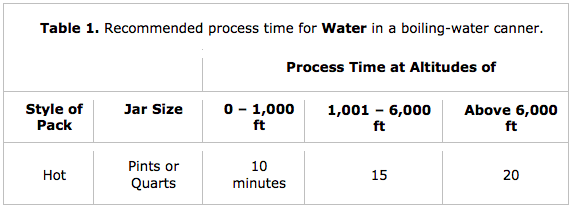
They explicitly note that this only sufficient to sterilize pure water:
“Water for canning must be free of nutrients. Boiling water canning does not destroy the spores of Clostridium botulinum, so can pure water only.”
If you’ve added other things to the water (flavoring, sugar, etc) then this process will not work. Anything but pure water in this process might run the risk of botulism.
As for jar sizes, the national center for food preservation recommends either pints or quarts for these processing times.
If you’d like to use half-gallon jars, the Utah State Extension Service recommends using a 20 minute process time. They don’t provide altitude adjustments, but for safety, I’d assume that means below 1,000 feet. Add 5 minutes for 1,000 to 6,000 feet (making it 25 min), and use 30 minutes for over 6,000 feet.
This process for water bath canning water is the general consensus coming from the state agencies that test and develop safe canning recipes.
Pressure Canning Water
Personally, I’m a fan of the ease of pressure canning. Why?
- Pressure Canning is Quicker ~ Instead of bringing a full water bath canner to a boil, I’m only bringing a few inches at the bottom of the pressure canner to a boil.
- Batch Sizes are Larger ~ I have a double-decker pressure canner, and it allows me to can 14 quarts at a time on two levels.
- Less Fuel & Steam ~ Faster process times means I’m using less fuel (propane) to get the job done, and the sealed container means I’m not steaming up the kitchen as much.
- Quality ~ The high heat of pressure canning can degrade the contents of the jar, so it’s not a good idea for delicate things like home-canned lemon curd, but water is just water…the quality is the same no matter how hot it gets.
(If you’re not familiar with pressure canning, please read this beginner’s guide to pressure canning before getting started.)
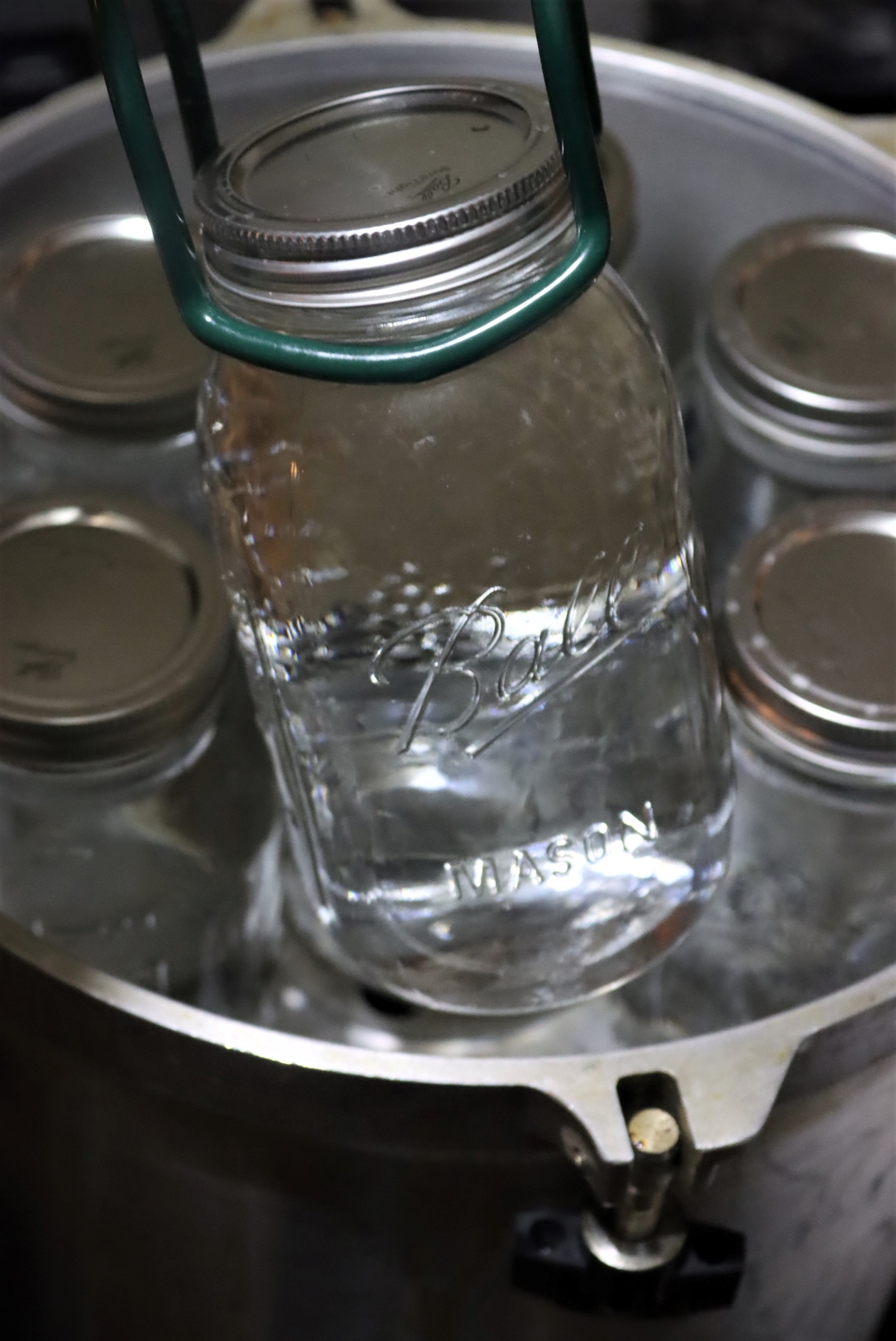
The state and governmental agencies don’t actually provide any recommendations for pressure canning water. Common sense though, tells you that processing the jars at 5 pounds pressure for 10 minutes (below 1,000 feet elevation) is totally sufficient.
At 5 pounds pressure, the water in the canner is at 228 degrees F, which is well above the 212 F temps in a water bath canner. Following the same times as for water bath canning would be more than sufficient, given the higher temperatures.
(At above 1,000 feet, increase the pressure to 10 pounds.)
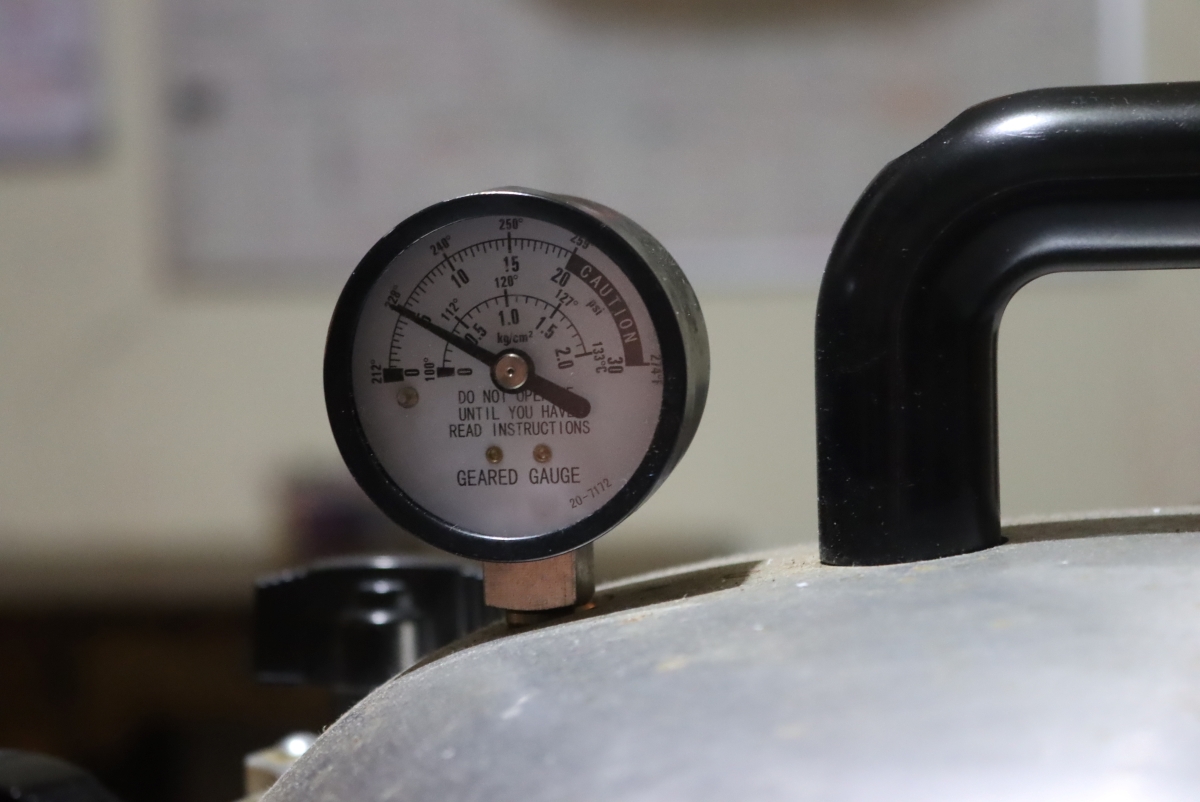
This method will work and is great if you’d like to use an abundance of caution. Heck, go ahead and can it at 10 pounds pressure for 20 minutes if you’re worried about it…but that’s not necessary.
I did find one source that has a tested pressure canning water recipe in Diane Devereaux’s book The Complete Guide to Pressure Canning. She suggests processing the jars at 5 pounds pressure for 8 minutes.
What do I do? I use 10 pounds pressure for 10 minutes. It’s overkill, but it only takes a few extra minutes and I know for sure that it’s going to be good.
How Long Does Canned Water Last?
In theory, clean potable water sealed in canning jars will last for decades. Provided the seal is still intact on the canning jar, the water inside should be good.
How Much Water Should You Store?
This really depends on your particular situation, and whether you live in a water-stressed region. FEMA recommends a gallon of water per person per day, half for drinking and the other half for cooking/washing.
Preparing for a week-long emergency, you’d need 7 gallons of water per person total. A flat of quart mason jars holds 3 gallons, so a bit more than two flats per person. That’s a lot of jars…
Here in Vermont, we live in a water-rich region and have a pond not far from the house. In a real emergency, we’d be processing water for safe drinking.
I keep canning jars of water on hand for short term emergencies and power outages. I have a total of 12 gallons canned for my family of 4, which takes us through little emergencies just fine. Longer than that, for things like hurricane Irene that cut off whole towns for 2+ weeks a time, and we’ll be breaking out the water filters.
If I lived in an arid climate, as many people do out west, I’d can considerably more given that there’s not accessible water around in the environment.
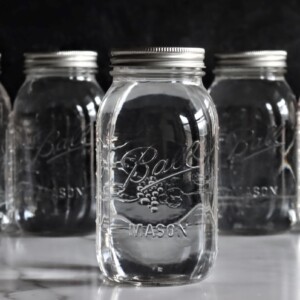
Canning Water for Emergencies
Ingredients
- Water
Instructions
- Prepare a water bath canner by preheating it to roughly 180 degrees F (just barely simmering). Prepare canning jars and lids as the canner heats.
- Fill a second large pot with clean potable water and bring it to a boil. Maintain a full rolling boil for 5 minutes.
- Fill prepared canning jars with the boiling water, leaving 1/2 inch headspace. Seal with 2 part canning lids to finger tight.
- Load the jars into the water bath canner and bring the canner to a full rolling boil. Once boiling, begin timing. Process for 10 minutes at altitudes below 1,000 feet. (See notes for higher altitudes)
- When the processing time is complete, remove the jars to cool on a towel on the counter.
- Once completely cool, check seals. Re-process any unsealed jars, and store properly processed sealed jars in the pantry.
Notes
Emergency Preparedness
Looking for more emergency preparedness resources?
- Best (and Worst) Survival Food Kits
- Choosing a Survival Seed Bank
- Can You Survive a Nuclear Winter?
- 40+ Plants You Can Make Into Flour
- Survival Gardening ~ Our Real Life Dry Run
Canning Tutorials
Putting up more than water? I have literally hundreds of canning recipes to fill your pantry with shelf-stable pantry staples…
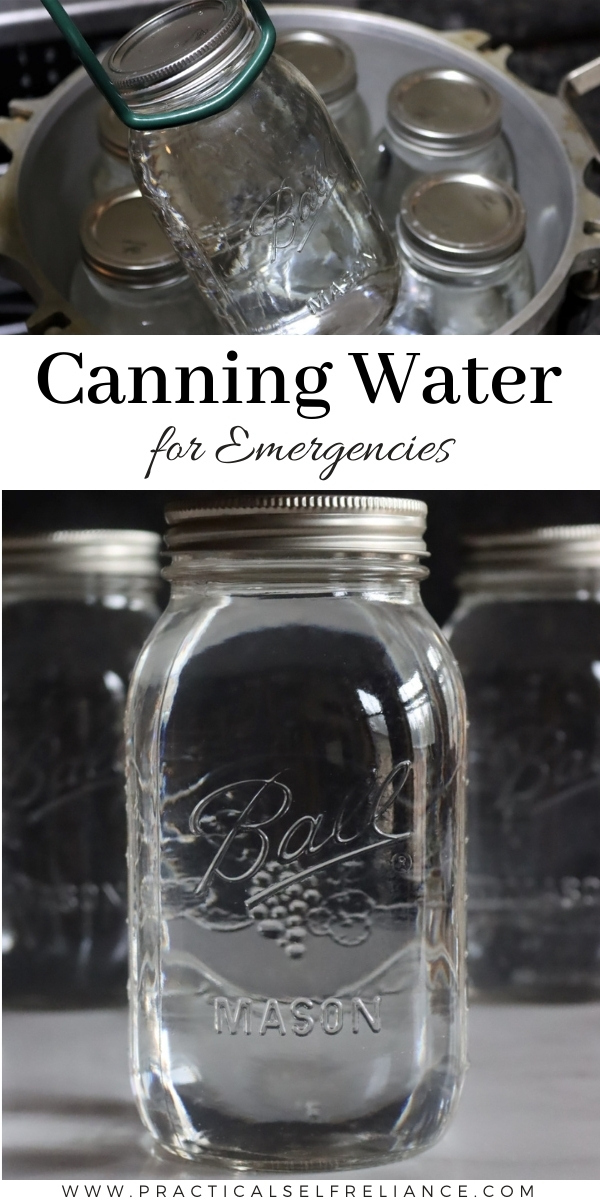
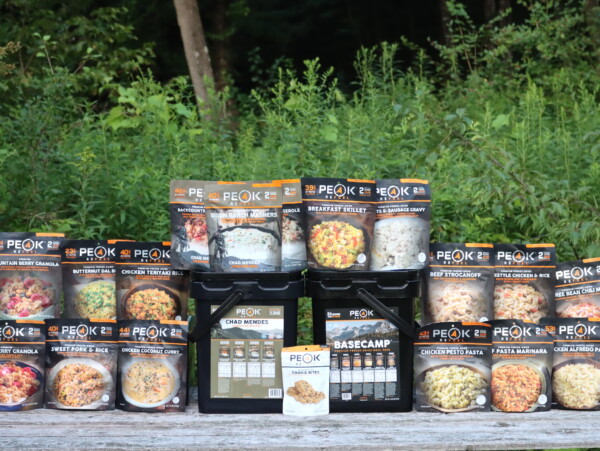
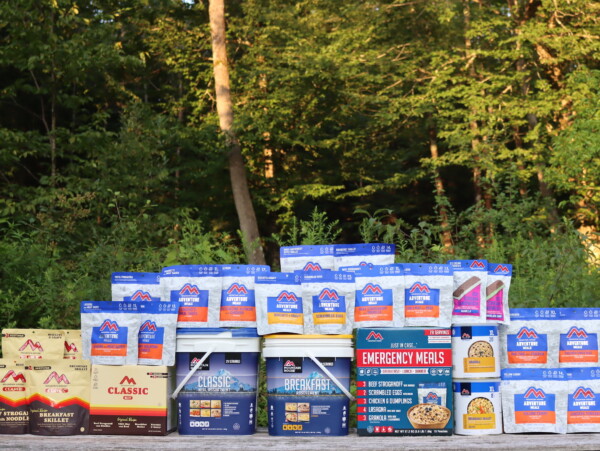
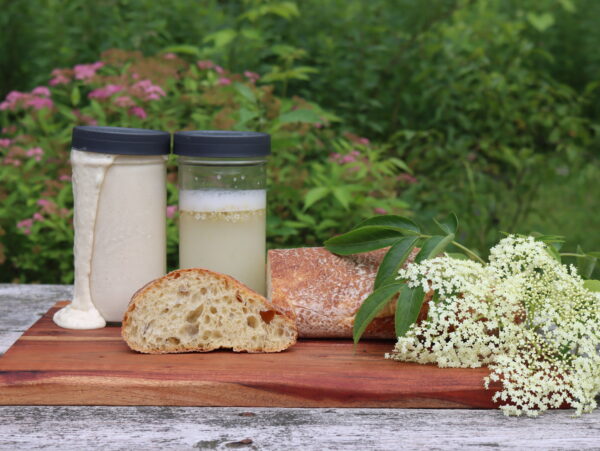
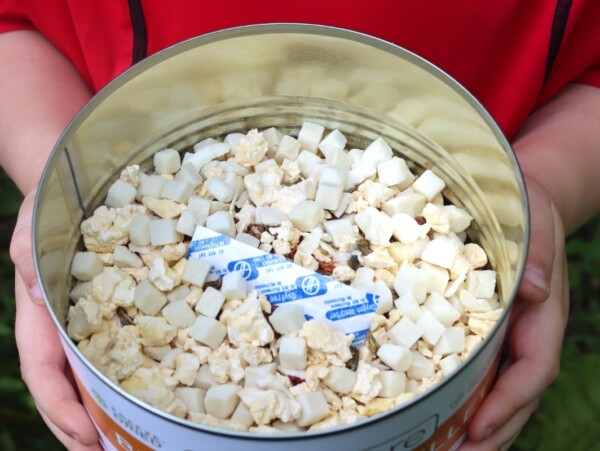
Is it necessary to boil water from a reverse osmosis system before placing it into jars and pressure canning them? Thank you for the article!
Yes, you still need to boil it. It’s not completely sterile when it comes out of a reverse osmosis (I know, crazy, some things still make it through), and you want it to be hot when it goes into the jars anyway.
Forgot to ask: Many describe distilled water as “dead” since it removes everything, including minerals from it.Does canning the water do the same or does it still retain the flavor of what your water tastes like?
It will taste like whatever your water tastes like, and it still has the minerals. What happens though, is it does taste “flat” until you shake it. Normal water out of a tap or filter has air in it because it’s flowing in pipes, not quite carbonation, but still just a bit, and that gives good flavor. When the water is sitting still in jars for a long time, the air comes out and that gives it a flat taste. If you give the jars a good shake before you open them, that’ll resolve that.
Otherwise, the water tastes exactly the same as it did going into the jars.
Thank you so much for this article. I read about canning water in the last couple of years but you are the first to explain both processes and the importance of potable water and what to expect. I am eager to start now and see which works well for us. With only two in the house, I don’t do a lot of big batch canning but do have the equipment to use the equipment and add jarred water to build a supply. Even though our water is very hard (even with a whole house softener we still have hard water stains), I would prefer to drink that than stuff from plastic bottles.
I do have a surface filter system that I run our drinking water through with hopes that it is removing additional hard water components. Do you think this would this be a better water source to use?
Our water is pretty hard here too, and I prefer it to store bought. Really it comes down to what you enjoy the flavor of, as it’ll taste the same when it comes out of the jars. If you like your water at home, then that’s what you should use.
I love this idea, we have lots of iron in our well water. We run the water through a Berkey water filter system. Works great at getting the iron out. Would this water be ok to can?
Yes, as long as it is plain water it’s totally ok to can.
I just purchased a steam canner.. Was wondering if I could use it to preserve emergency water.
Yes, typically you can use a steam canner for anything that you can use a water bath canner for.
I save all glass jars and am wondering if I can use these to can. The jars and lids have been through the sanitize cycle on my dishwasher. Thank you.
It’s not normally recommended to reuse lids once they have been processed unless they are lids that are specifically designed for reuse. I typically use these types of jars for dry storage.
Can one put 1/8tsp of vinegar in each quart of water to keep it preserved?
Adding 1/8 tsp of vinegar really wouldn’t change anything in terms of preservation, but you can add it if you want, that won’t impact canning safety.
During the distilling process the water is brought up to 239℉/115℃ but as it drips into the water bottle is is room temperature. all the impurities are boiled out during the distilling.
Could this canned water be used in a CPAP machine once processed?
I honestly don’t know anything about the water used in a CPAP machine so I really can’t say.
what are used in a CPAP machine is distilled water
I only drink distilled water that I distill at my home. Can this water be added straight into the Jars without boiling again? Before Putting in Water Bath.
I think the biggest concern with not boiling the water would be thermal shock. The water has already been distilled and then everything is sterilized during the canning process but you might risk thermal shock if you’re just using room temperature water. Is the water pretty hot when it comes through distillation process?
Love yr directions..just found you..i water bathed 8 qt.of well water today n added 1/8 tsp. Pickling salt to each qt. As hhad read that it improves flavor of canned water. Water bathed it 20 min..as above 1000 ft..i have cloudy white sediment in bottom of jars..we have very hard water..r they ok to store this way
I would say that the cloudiness is most likely a result of the minerals from the hard water.
Hi thanks for all this research! I wonder if salt counts as an “added ingredient”? I want to make saline solution for soaking minor injuries or piercings. I’m tired of running out of the saline spray they sell at piercing shops. It also comes in small quantities and is kind of overpriced. Most people in the piercing world say not to make your own saline at home because it isn’t properly sterile just by boiling water in a pot but I feel like theoretically canning it (assuming you do it properly) should be able to achieve that. Do you think salt would be dangerous in the way sugar might? I’m leaning toward no because most water has some minerals in it already.
Adding (or removing) salt is always fine in canning recipes, so that should be perfectly fine. And yes, there’s always various amounts of dissolved salts in water anyway. You just can’t add sugar (or anything a microbe could use as a food source). I could go into the details for the reasons behind this, but it’s not strictly relevant here other than to say salt water is fine (just no sugar).
As to whether it’s “medically sterile” for topical use, I can’t answer that as I don’t know. For extra safety, you might want to pressure can it, as that kills a lot more stuff than plain water bath canning. Whether that’s strictly necessary I can’t say, but in operating rooms, everything is put through an autoclave at pressure canner temperatures (rather than just boiled).
Re: comments about sludge/brown matter in the water–I agree that it’s most likely minerals. I would think distilling the water before canning would solve that problem.
You wouldn’t want to rely on distilled water for drinking in an emergency. The distilling process removes everything from the water except pure H2O. It sounds ideal, but your body requires some minerals to function, and long term drinking of distilled water will deplete the minerals in your body. If you do can distilled water I would recommend that you put a bottle of multi-vitamins in the flat with the jars.
On the pressure canning method, how much water do you put in the pressure cooker before you put the jars in and seal the lid?
The standard is 2 to 3 inches of water but each canner is different so you should follow the instructions that came with your canner.
Hi,
I read a lot about thermal shock when canning water. Why would you not put your clean jars into potable water and then turn the heat on? This way the jars and the water will come up to temperature at the same time and sterilize both too.
If the jars are warm and the water is boiling when it goes into the jars then thermal shock isn’t an issue. The processing time described here is based on the water going into the canner after it has been boiled. There are lots of methods out there for canning water so as long as you follow a tested method, you should be good to go.
So is that a thumbs up or not for my suggestion?
Thanks
I can’t really give a suggestion on that. If you can find a source that shows this as a tested method then you’re good to go.
I have just called my first batch of water. I am using potable well water. The final product is a bit cloudy. Could it be from calcium in the water? I think it is good, I have no worries about quality, just wondering what might cause cloudiness.
Yes, the cloudiness can often come from calcium or other minerals in the water.
I have well water and we started buying spring water for making ice or tea or coffee. if you boil my well water it will leave a film of lime. there is lots of lime in my water. We were less than half mile from my mom’s and you could boil her water without any problems. when you make ice and put it in a glass of water little floaters make me think it is nasty.. Is spring water ok to can.
Any drinkable water can be canned as long as it doesn’t have any additives in it.